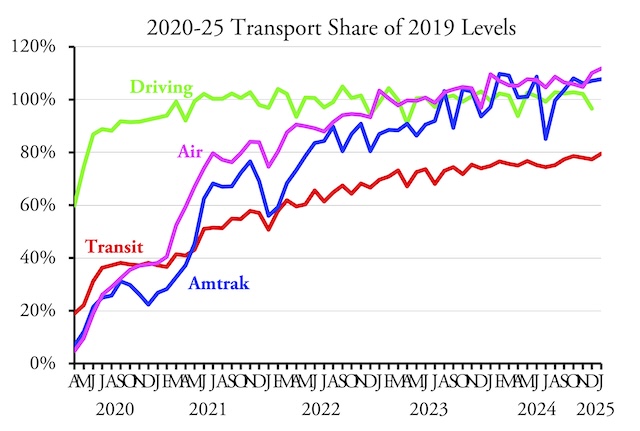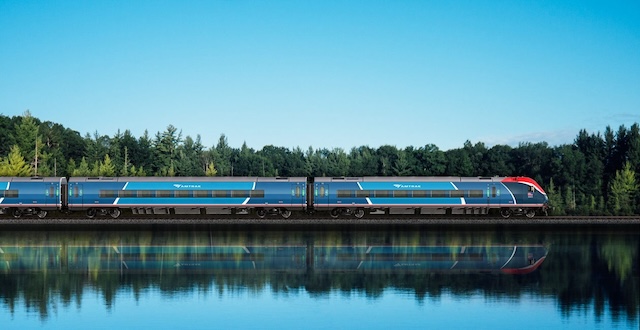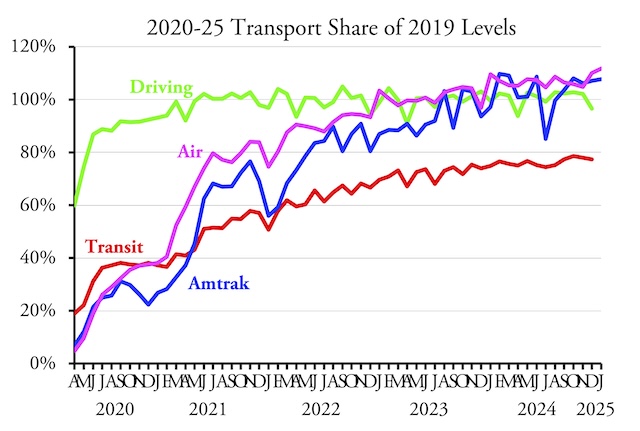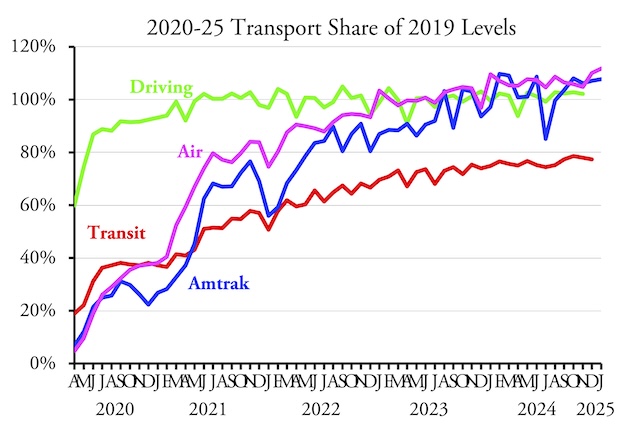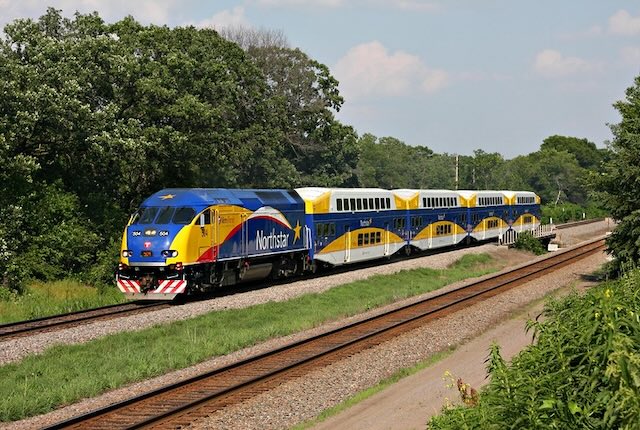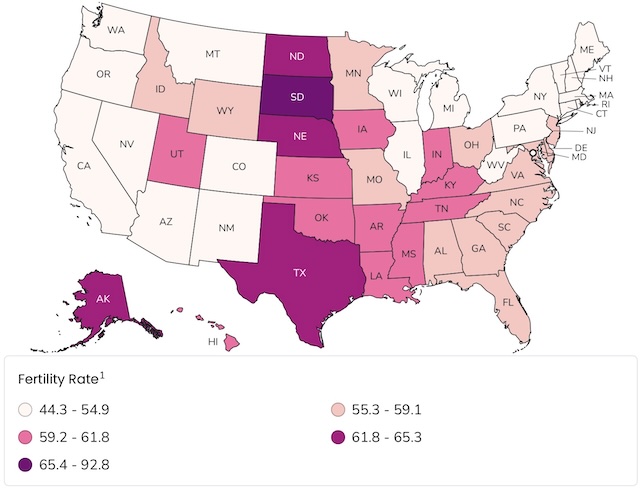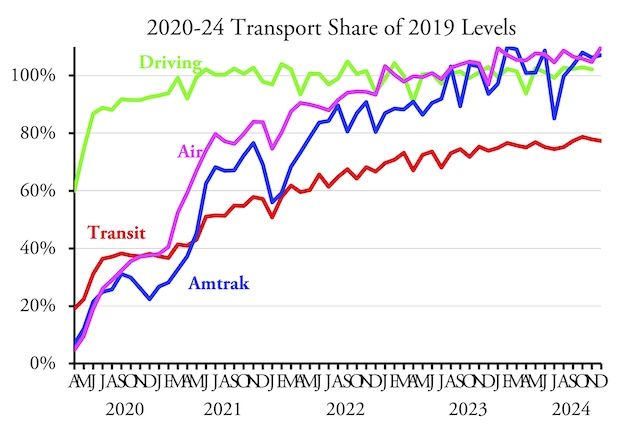January transit ridership in 2024 was 79.8 percent as much as in 2019, according to data released late last week by the Federal Transit Administration. That’s the highest level since the beginning of the pandemic and may be due to an increased number of people returning to workplaces in Manhattan.
While transit in the New York urban area carried 88.2 percent of 2019 levels and the New York Metropolitan Transportation Authority carried 90.5 percent, transit in the rest of the country carried only 73.1 percent. Transit ridership continued to be particularly dismal in Chicago (66.7%), Atlanta (48.0%), Phoenix (50.2%), San Francisco (65.7%), Minneapolis-St. Paul (64.5%), Tampa-St. Petersburg (59.7%), and St. Louis (55.4%). Continue reading

